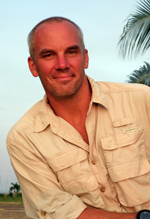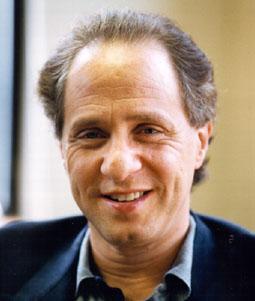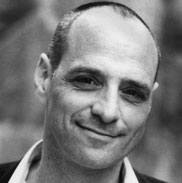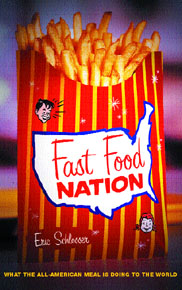This is the model used by "insider magazines" or industry-based publications distributed only to qualifying readers, often for free and determined by some form of survey. This latter model was widely used before the rise of the World Wide Web and is still employed by some titles. For example, in the United Kingdom, a number of computer-industry magazines, including Computer Weekly and Computing, and in finance, Waters Magazine.
TED is a nonprofit devoted to Ideas Worth Spreading. It started out as a conference bringing together people from three worlds: Technology, Entertainment, Design. Since then its scope has become ever broader. Along with two annual conferences -- the TED Conference in Long Beach and Palm Springs each spring, and the TEDGlobal conference in Edinburgh UK each summer -- TED includes the award-winning TEDTalks video site, the Open Translation Project and TED Conversations, the inspiring TED Fellows and TEDx programs, and the annual TED Prize.
TED.com has a bunch of new technological ideas presented by brilliant people around the world, free to everyone. Check out the website and watch one of the many videos they have!


 Myspace is a social networking service owned by Specific Media LLC and pop star Justin Timberlake. Myspace launched in August 2003 and is headquartered in Beverly Hills, California. In August 2011, Myspace had 33.1 million unique U.S. visitors. Myspace was founded in 2003 and was acquired by News Corporation in July 2005 for $580 million. From 2005 until early 2008, Myspace was the most visited social networking site in the world, and in June 2006 surpassed Google as the most visited website in the United States. In April 2008, Myspace was overtaken by Facebook in the number of unique worldwide visitors, and was surpassed in the number of unique U.S. visitors in May 2009. Since then, the number of Myspace users has declined steadily in spite of several redesigns. As of October 2011, Myspace was ranked 103rd by total web traffic. In June 2009, Myspace employed approximately 1,600 workers. Since then the company has undergone several rounds of layoffs and by June 2011, Myspace had reduced its staff to around 200. On June 29, 2011, Myspace was sold to Specific Media and Justin Timberlake for approximately $35 million.
Myspace is a social networking service owned by Specific Media LLC and pop star Justin Timberlake. Myspace launched in August 2003 and is headquartered in Beverly Hills, California. In August 2011, Myspace had 33.1 million unique U.S. visitors. Myspace was founded in 2003 and was acquired by News Corporation in July 2005 for $580 million. From 2005 until early 2008, Myspace was the most visited social networking site in the world, and in June 2006 surpassed Google as the most visited website in the United States. In April 2008, Myspace was overtaken by Facebook in the number of unique worldwide visitors, and was surpassed in the number of unique U.S. visitors in May 2009. Since then, the number of Myspace users has declined steadily in spite of several redesigns. As of October 2011, Myspace was ranked 103rd by total web traffic. In June 2009, Myspace employed approximately 1,600 workers. Since then the company has undergone several rounds of layoffs and by June 2011, Myspace had reduced its staff to around 200. On June 29, 2011, Myspace was sold to Specific Media and Justin Timberlake for approximately $35 million.

Founded in February 2004, Facebook is a social utility that helps people communicate more efficiently with their friends, family and coworkers. The company develops technologies that facilitate the sharing of information through the social graph, the digital mapping of people's real-world social connections. Anyone can sign up for Facebook and interact with the people they know in a trusted environment.
 Facebook is one of the most-trafficked sites in the world and has had to build infrastructure to support this rapid growth. The company is the largest user in the world of memcached, an open source caching system, and has one of the largest MySQL database clusters anywhere. There are over 800 million active (users who have returned to the site in the last 30 days). Facebook employees 2,000 + people. Members: Mark Zuckerberg, Marc Andreessen, Jim Breyer, Don Graham, Reed Hastings, Erskine Bowles and Peter Thiel; Observer: David Sze; Observer: Paul Madera.
Facebook is one of the most-trafficked sites in the world and has had to build infrastructure to support this rapid growth. The company is the largest user in the world of memcached, an open source caching system, and has one of the largest MySQL database clusters anywhere. There are over 800 million active (users who have returned to the site in the last 30 days). Facebook employees 2,000 + people. Members: Mark Zuckerberg, Marc Andreessen, Jim Breyer, Don Graham, Reed Hastings, Erskine Bowles and Peter Thiel; Observer: David Sze; Observer: Paul Madera.
Twitter is a real-time information network that connects you to the latest information about what you find interesting. Simply find the public streams you find most compelling and follow the conversations. At the heart of Twitter are small bursts of information called Tweets. Each Tweet is 140 characters in length, but don’t let the small size fool you—you can share a lot with a little space. Connected to each Tweet is a rich details pane that provides additional information, deeper context and embedded media. You can tell your story within your Tweet, or you can think of a Tweet as the headline, and use the details pane to tell the rest with photos, videos and other media content. See it in action.

Blogger was started by a tiny company in San Francisco called Pyra Labs in August of 1999. This was in the midst of the dot-com boom. But we weren't exactly a VC-funded, party-throwing, foosball-in-the-lobby-playing, free-beer-drinking outfit. (Unless it was other people's free beer.) We were three friends, funded by doing annoying contract web projects for big companies, trying to make our own grand entrance onto the Internet landscape. What we were originally trying to do doesn't matter so much now. But while doing it, we created Blogger, more or less on a whim, and thought — Hmmm... that's kinda interesting. Blogger took off, in a small way, and eventually a bigger way, over a couple years. We raised a little money (but stayed small). And then the bust happened, and we ran out of money, and our fun little journey got less fun. We narrowly survived, not all in one piece, but kept the service going the whole time (most days) and started building it back up. Things were going well again in 2002. We had hundreds of thousands of users, though still just a few people. And then something no one expected happened: Google wanted to buy us. Yes, that Google. We liked Google a lot. And they liked blogs. So we were amenable to the idea. And it worked out nicely. Now we're a small (but slightly bigger than before) team in Google focusing on helping people have their own voice on the web and organizing the world's information from the personal perspective. Which has pretty much always been our whole deal.

Company Information
LinkedIn started out in the living room of co-founder Reid Hoffman in 2002. The site officially launched on May 5, 2003. At the end of the first month in operation, LinkedIn had a total of 4,500 members in the network. As of June 30, 2011 (the end of the second quarter), professionals are signing up to join LinkedIn at a rate that is faster than two new members per second. The company is publicly held and has a diversified business model with revenues coming from hiring solutions, marketing solutions and premium subscriptions.
-As of August 4, 2011, LinkedIn operates the world’s largest professional network on the Internet with more than 120 million members in over 200 countries and territories.
-More than half of LinkedIn members are currently located outside of the United States.
-There were nearly two billion people searches on LinkedIn in 2010. Headquartered in Mountain View, Calif., LinkedIn also has U.S. offices in Chicago, New York, Omaha and San Francisco.
-International LinkedIn offices are located in Amsterdam, Bangalore, Delhi, Dublin, London, Melbourne, Mumbai, Munich, Paris, Singapore, Stockholm, Sydney, Tokyo and Toronto.
-The company’s management team is comprised of seasoned executives from companies like Yahoo!, Google, Microsoft, TiVo, PayPal and Electronic Arts. The CEO of LinkedIn is Jeff Weiner.
-LinkedIn is currently available in ten languages: English, French, German, Italian, Japanese, Portuguese, Spanish, Russian, Turkish and Romanian.
-As of June 30, 2011 (the end of the second quarter), LinkedIn has 1,515 full-time employees located all around the globe. LinkedIn started off 2011 with about 1,000 full-time employees located all around the globe, up from around 500 at the beginning of 2010.
myYearbook is a social site where you can connect with friends and make new friends while playing social games, earning Lunch Money, supporting your favorite causes, and much more!
myYearbook is different from other social networks. On myYearbook, you can:
Play Match to find your Secret Admirer
Buy and sell your friends' photos in Owned!
Battle your friends for "Best Looking" or "Most Gangsta"
Earn Lunch Money playing dozens of Games
Turn your Lunch Money into real money for real charities in Causes
Watch full episodes of your favorite TV shows
And play many more social games!
myYearbook was started during Spring Break 2005. It started in just a couple high schools and spread fast. In September 2005, we expanded to all schools in the world. Now we have millions of members, and tens of thousands of people joining everyday!
Wikipedia is a multilingual, web-based, free-content encyclopedia project based on an openly editable model. The name "Wikipedia" is a portmanteau of the words wiki (a technology for creating collaborative websites, from the Hawaiian word wiki, meaning "quick") and encyclopedia. Wikipedia's articles provide links to guide the user to related pages with additional information. Wikipedia is written collaboratively by largely anonymous Internet volunteers who write without pay. Anyone with Internet access can write and make changes to Wikipedia articles (except in certain cases where editing is restricted to prevent disruption or vandalism). Users can contribute anonymously, under a pseudonym, or with their real identity, if they choose.

We love photography. We started Phanfare back in 2004 because there was no internet service where we wanted to display all our photos and videos. Existing solutions were too print-focused and gave us no sense of ownership over our media. We wanted our own online presence with our own destination URL.
Building a subscription-based service made sense to us so that we could focus on the needs of the customer without having to please advertisers. And we liked the straightforward relationship of customers paying for what they were getting, rather than giving away mediocre hosting in exchange for the purchase of prints, like the online photo finishers.
Our first solution combined the power of network connected desktop clients with synchronized per-family websites. We have evolved the system over the years, adding the features that we believe photographers want and need. At the same time, we have tried to keep Phanfare simple.
We aim to serve people who value their personal media, want a better experience and will pay to preserve it. Our customer support is amazing, backed up by real people who are always ready to solve your problems and go the extra mile to help.
1. We want to help people make their photos available to the people who matter to them.
2. We want to enable new ways of organizing photos and video.
Flickr continues to evolve in myriad ways, all of which are designed to make it easier and better. Check out the Flickr Blog to stay apprised of the latest developments. The fact that you've read to the end of this entire document and are hanging out at the bottom of this page with nothing but this silly text to keep you company is proof of a deep and abiding interest on your part. What are you waiting for? Sign up now!
 Founded in February 2005, YouTube allows billions of people to discover, watch and share originally-created videos. YouTube provides a forum for people to connect, inform, and inspire others across the globe and acts as a distribution platform for original content creators and advertisers large and small. Visit youtube.com to see some awesome videos, or to post your own.
Founded in February 2005, YouTube allows billions of people to discover, watch and share originally-created videos. YouTube provides a forum for people to connect, inform, and inspire others across the globe and acts as a distribution platform for original content creators and advertisers large and small. Visit youtube.com to see some awesome videos, or to post your own.
The Klout Score measures influence based on your ability to drive action. Every time you create content or engage you influence others. The Klout Score uses data from social networks in order to measure:
True Reach: How many people you influence
 Amplification: How much you influence them
Amplification: How much you influence themNetwork Impact: The influence of your network
BibMe is a free automatic citation creator that supports MLA, APA, Chicago, and Turabian formatting. BibMe leverages external databases to quickly fill citation information for you. BibMe will then format the citation information and compile a bibliography according to the guidelines of the style manuals. If you prefer, you can enter your citation information manually. BibMe also features a citation guide that provides students with the style manuals' guidelines for citing references. That's pretty handy for a college student to know, just visit bibme.org to get started!
EasyBib is an automatic bibliography composer. When you have sources you need to cite properly for your research paper, EasyBib will help you format your sources quickly and accurately. Millions of students a month use EasyBib to cite sources for their papers. EasyBib is a service of ImagineEasy Solutions, a tiny company that makes big products. Visit easybib.com to use it now!
The Internet is a global system of interconnected computer networks that use the standard Internet protocol suite (TCP/IP) to serve billions of users worldwide. It is a network of networks that consists of millions of private, public, academic, business, and government networks, of local to global scope, that are linked by a broad array of electronic, wireless and optical networking technologies. The Internet carries a vast range of information resources and services, such as the inter-linked hypertext documents of the World Wide Web (WWW) and the infrastructure to support email. It is estimated that in 1993 the Internet carried only 1% of the information flowing through two-way telecommunication, by 2000 this figure had grown to 51%, and by 2007 more than 97% of all telecommunicated information was carried over the Internet. The Internet is also responsible for all of the wikis in this post.

At Lulu, it’s free to publish, and authors can create everything from hardcover books to eBooks, photo books to calendars. Authors keep all the rights to their works and retain 80 percent of the profit they set when their books sell. We operate a global print network and provide worldwide distribution so that authors can reach readers just about anywhere, including on Amazon.com and the iBookstore. If authors need any help along the way — with cover design, editing, formatting, marketing or the publishing process in general — our services team can provide expert assistance through a la carte offerings and bundled packages.
Check out easycanvasprints.com to upload your very own photo to be published on a professional canvas for a reasonable price. With your custom canvas prints, you can easily turn your very own image into a stunning work of art on canvas. Upload your own photos and pictures, and create a personalized print on canvas. We offer small, medium, and large canvas prints. Whether you want to decorate your home or office, canvas printing wall art can be used everywhere because you create it!
Paper.li is a content curation service. It enables people to publish newspapers based on topics they like and treat their readers to fresh news, daily.
We believe that people (and not machines) are the ones qualified to curate the content that matters most. We also think that these same people can greatly help their own communities to find their way through this “massive content world” we live in. We’re here to help!
Taylor Swift wrote a song called "Mean" that is talking to the critics that wrote a bad review about her about how she will be successful, and all the critics will ever be is mean. She also relates the song to a young girl who wears a dress that differs in color from the other girls her age, so the other girls just make fun of her. This tells girls that they don't need to impress other people and deal with people who are mean to you. This message is very important to portray to people, that some people are really mean and you don't have to deal with that. A lot of the songs that Taylor Swift writes portray positive messages to people. Some of the lyrics are:
Someday I'll be living in a big old city
And all you're ever gonna be is mean
Someday I'll be big enough so you can't hit me
And all you're ever gonna be is mean


David Alan Mamet is an American playwright, essayist, screenwriter and film director. Best known as a playwright, Mamet won a Pulitzer Prize and received a Tony nomination for Glengarry Glen Ross (1984). He also received a Tony nomination for Speed-the-Plow (1988). As a screenwriter, he received Oscar nominations for The Verdict (1982) and Wag the Dog (1997). Mamet's books include: The Old Religion (1997), a novel about the lynching of Leo Frank; Five Cities of Refuge: Weekly Reflections on Genesis, Exodus, Leviticus, Numbers and Deuteronomy (2004), a Torah commentary with Rabbi Lawrence Kushner; The Wicked Son (2006), a study of Jewish self-hatred and antisemitism; and Bambi vs. Godzilla, a commentary on the movie business. David Mamet is one of the authors that Rob mentioned in class, as Rob had a book that he had written. This book was a book that taught actors how to be more successful and portray a message, which is what the media do.
38. The Quran
The Quran is a book similar to the Bible for Muslims. Muslims believe the Quran to be verbally revealed through angel Jibrīl (Gabriel) from God to Muhammad gradually over a period of approximately 23 years beginning in 610 CE, when Muhammad was 40, and concluding in 632 CE, the year of his death. Muslims further believe that the Qur'an was precisely memorized, recited and exactly written down by Muhammad's companions (Sahaba) after each revelation was dictated by him. Shortly after Muhammad's death the Quran was compiled into a single book by order of the first Caliph Abu Bakr and at the suggestion of his future successor Umar. This book communicates the messages from God to Muhammad, and gives the Muslim people a good look into their religious past. It also gives a lot of us, who are not Muslim, a good look at what they believe.
39. 50 Facts that Should Change the World
This book was brought in by Rob to show the class as it is on his bookshelf.
50 Facts That Should Change the World is a series of snapshots of life in the 21st century. From the inequalities and absurdities of the so-called developed world to the vast scale of suffering wreaked by war, famine and AIDS in developing countries, it paints a picture of incredible contrasts. These are the facts YOU need to know.
50 Facts That Should Change the World contains an eclectic selection of facts that address a broad range of global issues. Each is followed by a short essay explaining the story behind the fact, fleshing out the bigger problem lurking behind the numbers. Real-life stories, anecdotes and case studies help to humanize the figures and make clear the human impact of the bald statistics.
The facts paint a picture of a world of inequality: unheard-of and often ludicrous prosperity living alongside crippling poverty. Some of the facts will make you rethink things you thought you knew. Some illustrate long-term, gradual changes in our society. Others concern local issues that people face in their everyday lives. Many will shock. All of the facts remind us that whether we like to think of it or not, the world is interconnected and civilization is a fragile concept. 50 Facts that Should Change the World will make us think about some of the hard facts about our civilization, and what we can do about them. Jessica Williams is a journalist and television producer.
40. Acting: On Stage and Off
This book demonstrates how offstage performance can be effectively adapted for the theatre, as well as how onstage training can be applied toward leading a full life outside the theatre, ACTING: ONSTAGE AND OFF is a humorous yet informative book that discusses the interplay between life on and off the stage. You'll learn everything from the phases of actor training to body-relaxation techniques. This book helps to teach people how to portray messages to an audience. This book was also one that Rob brought to class.
41. The Art of Dramatic Writing
Rob also brought this book into class to tell about its importance in media. The Art of Dramatic Writing is a concise guide to all forms of creative writing, from premise to characters to plot. Dramatic writing is important because it is also persuasive writing most of the time; and being able to persuade people into believing your same beliefs is a strong skill. Dramatic writing is also an important skill when trying to tell a story well to an audience, it conveys your message more clearly.
42. Running Scared: Fear Worry and the God of Rest
In Running Scared, Edward T. Welch investigates the roots of fear in the human soul and the ramifications of living in the grips of anxiety, worry, and dread. Welch encourages readers to discover for themselves that the Bible is full of beautiful words of comfort for fearful people (and that every single person is afraid of something). Within the framework of thirty topical meditations, Welch offers sound biblical theology and moment-by-moment, thoughtful encouragement for life-saving rescue in the midst of the heart and mind battlefield of rampant panic-stricken responses. This comprehensive primer on the topic of fear, worry, and the rest of God will have readers retreating to scripture for invariable constancy, stalwart care, and robust comfort, instead of as Welch terms it hitting the default switch by responding with characteristic human independence, control, and self-protectiveness. Running Scared affirms that, through Scripture, God speaks directly to our fears: On money and possessions On people and their judgments On death, pain, and punishment  Welch's lively text provides convincing evidences that humanity's struggle against active and dormant fears are countless. The good news is that God provides both the remedy and the cure for this malady in the person of Jesus Christ, the work of the Holy Spirit, and through powerful, life-altering promises in Scripture. Far more than merely another psychology self-help guide, Running Scared serves as a biblical roadmap to a life of serenity and security.












































































